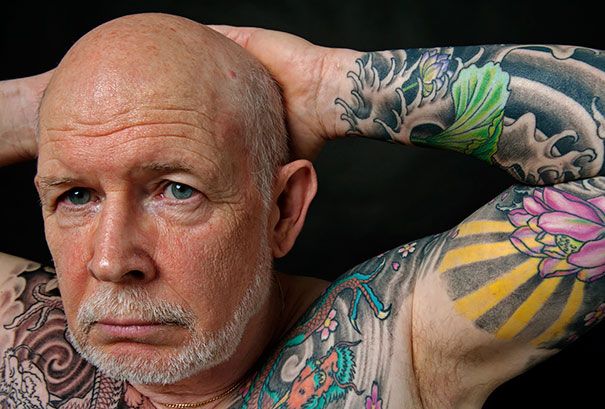Tatted Up: Senior Citizens Reveal How Body Art Still Looks Amazing On Aging Skin

To get a tattoo or to not get a tattoo, that is the question. The decision to go under the needle and adorn your skin with symbols of beauty, strength, and rebellion is usually driven by beliefs you hold (at the time). But it becomes a permanent mark on your skin — a canvas that is continuously aging — which for some leads to tattoo regret.
In the U.S, one out of every five adults — 21 percent — has at least one tattoo, according to a recent Harris Poll. This number is closer to 40 percent among those ages 18 and 19. The rising popularity of tattoos means a large portion of this generation will grow old with skin art.
Aging skin changes the shape, composition, and elasticity of tattoos because they are embedded in the skin. Tattoo aging is comparable to a faded colored cloth; the tattoo begins to lose its detail in terms of color and definition. The ink particles in older tattoos tend to move deeper into the skin over time, says The Evergreen State College, which makes the tattoo look bluish, faded, and blurry and harder to remove with laser treatment. Moreover, the ink of older tattoos has been found in local lymph nodes, which supports the theory that phagocytic cells — cells that engulf and absorb foreign bodies into the bloodstream and tissues — are the cause of ink movement.
Tattoo regret or not, a handful of submissions on the blog BoredPanda, by seniors themselves, reveal how the beauty of body art is ever-lasting — even at old age.
Click "View Slideshow" to get a glimpse at some of the stunning works of art on human canvases over 60.




























